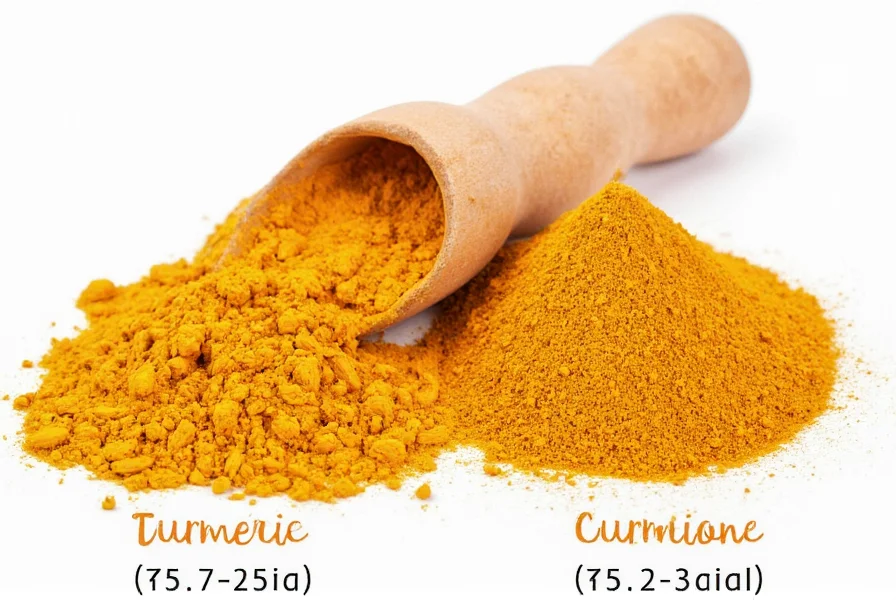Understanding the distinction between turmeric and curcumin supplements is crucial for making informed decisions about their use. While often used interchangeably, these terms represent different products with varying concentrations of active compounds and distinct research backing.
The Botanical and Chemical Foundations
Turmeric (Curcuma longa) is a flowering plant in the ginger family, native to Southeast Asia. The rhizome (root) is dried and ground to create the familiar yellow spice used in cooking. This whole turmeric contains approximately 2-8% curcuminoids by weight, with curcumin representing about 75% of these curcuminoids.
Curcumin supplements, by contrast, are concentrated extracts that typically contain 95% curcuminoids. This means a standard 500mg curcumin supplement delivers approximately 475mg of curcuminoids, compared to just 10-40mg you'd get from the same amount of raw turmeric powder.
Evaluating the Scientific Evidence
Research on curcumin's health benefits has expanded significantly over the past two decades, though study quality varies considerably. The most robust evidence supports curcumin's role in managing inflammation and supporting joint health.
| Health Area | Research Status | Effective Dosage Range |
|---|---|---|
| Inflammation Management | Strong clinical evidence | 500-1500mg/day of standardized extract |
| Osteoarthritis Support | Good clinical evidence | 500mg twice daily of enhanced bioavailability formula |
| Cognitive Health | Promising preliminary research | 80-500mg/day; more human studies needed |
| Cardiovascular Support | Moderate evidence | 500-1000mg/day; effects on biomarkers observed |
A 2022 meta-analysis published in Nutrients reviewed 27 clinical trials and concluded that curcumin supplementation significantly reduced inflammatory markers like CRP and IL-6 compared to placebo. However, the researchers noted substantial variation in study methodologies and supplement formulations.
Addressing the Bioavailability Challenge
One of curcumin's biggest limitations is its poor bioavailability. When consumed alone, curcumin has low absorption, rapid metabolism, and quick elimination. This explains why traditional Ayurvedic preparations often combine turmeric with black pepper (piperine) or fats.
Modern supplement formulations address this through several approaches:
- Piperine-enhanced - Increases absorption by up to 2000% by inhibiting metabolic enzymes
- Liposomal or nanoparticle - Encapsulates curcumin for better intestinal absorption
- Phospholipid complexes - Binds curcumin to phospholipids for improved uptake
- Water-soluble formulations - Modifies molecular structure for better solubility
Research published in Food Science & Nutrition demonstrated that certain enhanced formulations can achieve blood concentrations 30-40 times higher than standard curcumin extracts.
Safety Considerations and Potential Interactions
Curcumin is generally well-tolerated at recommended doses, but several important considerations exist:
Common side effects at higher doses (over 1500mg/day) may include gastrointestinal discomfort, nausea, or diarrhea. These typically resolve with dose reduction.
Medication interactions require particular attention:
- Curcumin may enhance the effects of blood thinners like warfarin
- Potential interaction with diabetes medications requiring blood sugar monitoring
- Theoretical concern with chemotherapy drugs due to antioxidant properties
Individuals with gallbladder issues should consult a healthcare provider before use, as curcumin may stimulate bile production. Pregnant and breastfeeding women should avoid high-dose supplementation due to limited safety data.
Practical Guidance for Supplement Selection
With the supplement market largely unregulated, choosing quality turmeric and curcumin products requires careful consideration:
Dosage recommendations vary by purpose. For general wellness, 250-500mg of a bioavailable curcumin extract daily may suffice. For targeted support of inflammation or joint health, 500-1000mg twice daily of an enhanced formulation is commonly used in research.
Quality verification should include:
- Third-party testing certification (USP, NSF, ConsumerLab)
- Clear labeling of curcuminoid content
- Disclosure of bioavailability enhancement method
- Manufacturing date and expiration information
Be wary of products making dramatic health claims or offering extremely low prices, as these often indicate inferior quality or misleading labeling. The most effective curcumin supplements typically cost $30-$50 for a one-month supply.
Setting Realistic Expectations
While research on curcumin is promising, it's essential to maintain realistic expectations. Curcumin supplements work gradually and should complement, not replace, conventional medical treatments. Most studies showing significant benefits used enhanced bioavailability formulations for at least 8-12 weeks.
Individual responses vary considerably based on genetics, health status, and other factors. Keeping a symptom journal can help determine if a specific product provides noticeable benefits for your particular concerns.











 浙公网安备
33010002000092号
浙公网安备
33010002000092号 浙B2-20120091-4
浙B2-20120091-4